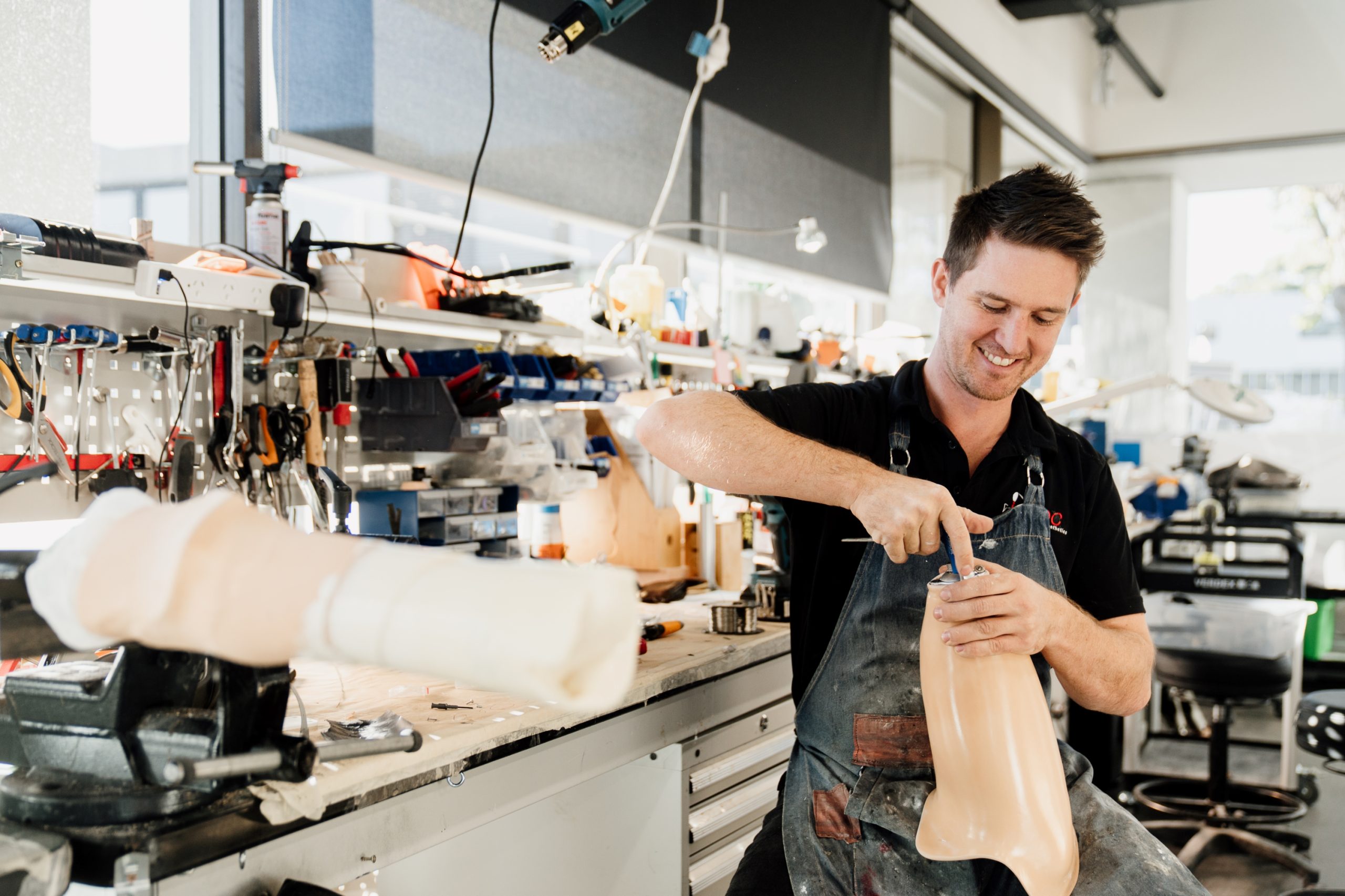
At ForMotion Clinic, we’re here to help you regain independence and stay active with our specialise upper limb prosthetics, designed for all levels of amputation or limb difference.
Our ForMotion Upper X Clinic in Alexandria features cutting-edge technology and a dedicated training space tailored for upper limb prosthetic users. While this clinic focuses on advanced prosthetic arm solutions, every ForMotion Clinic has a skilled prosthetist ready to provide you with personalised care.
We work closely with you, your physiotherapist (PT), and/or a specialist occupational therapist (OT) to ensure you are strong and capable of specific activities or movements using your prosthetic arms. As you progress, we’ll adjust your prosthetic prescription to meet your evolving needs.
See how we work with a multidisciplinary team (MDT) and other support services to help you get where you want to be!
A prosthetic arm can benefit individuals who have experienced limb loss due to:
Prosthetic arms are tailored to meet individual needs, ensuring a solution that fits your lifestyle and goals. There’s an option for you to help with:
Many people with an upper limb difference feel that they can “get by” without a prosthetic arm and may even feel underserving of one. However, almost everyone can benefit from using a prosthetic arm.
Talk to the ForMotion team, we’re here to guide you through your options and help you find a solution that fits your lifestyle and goals. Let us work with you to explore what’s possible.

There are several different types of prostheses for upper extremities. Your prosthetist will work closely with you, your rehabilitation specialist and other allied health team such as PT & OT to devise the solution right for you. Get in contact with a prosthetic expert now!
Examples of what prosthetic arm types could look like:
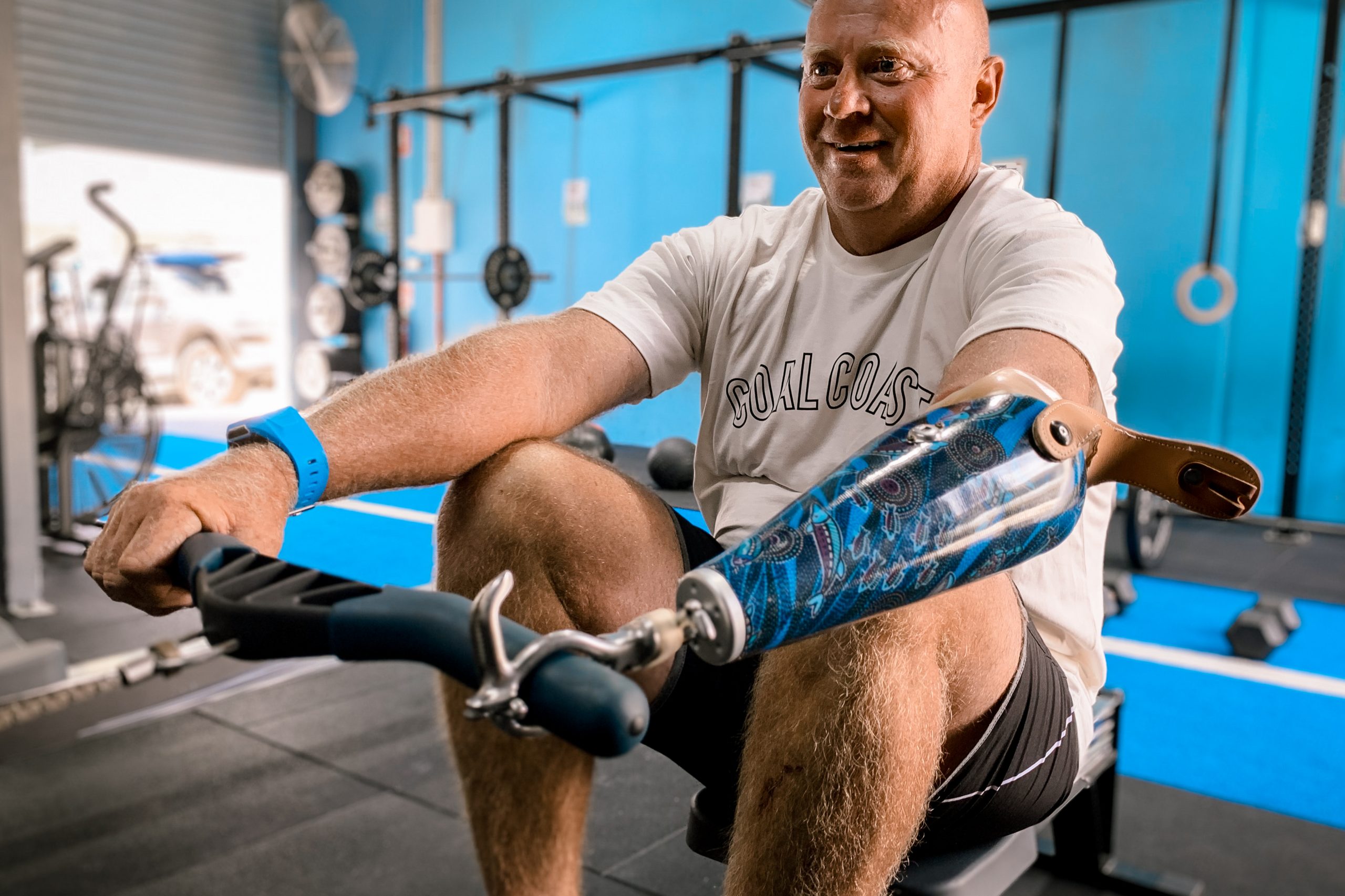
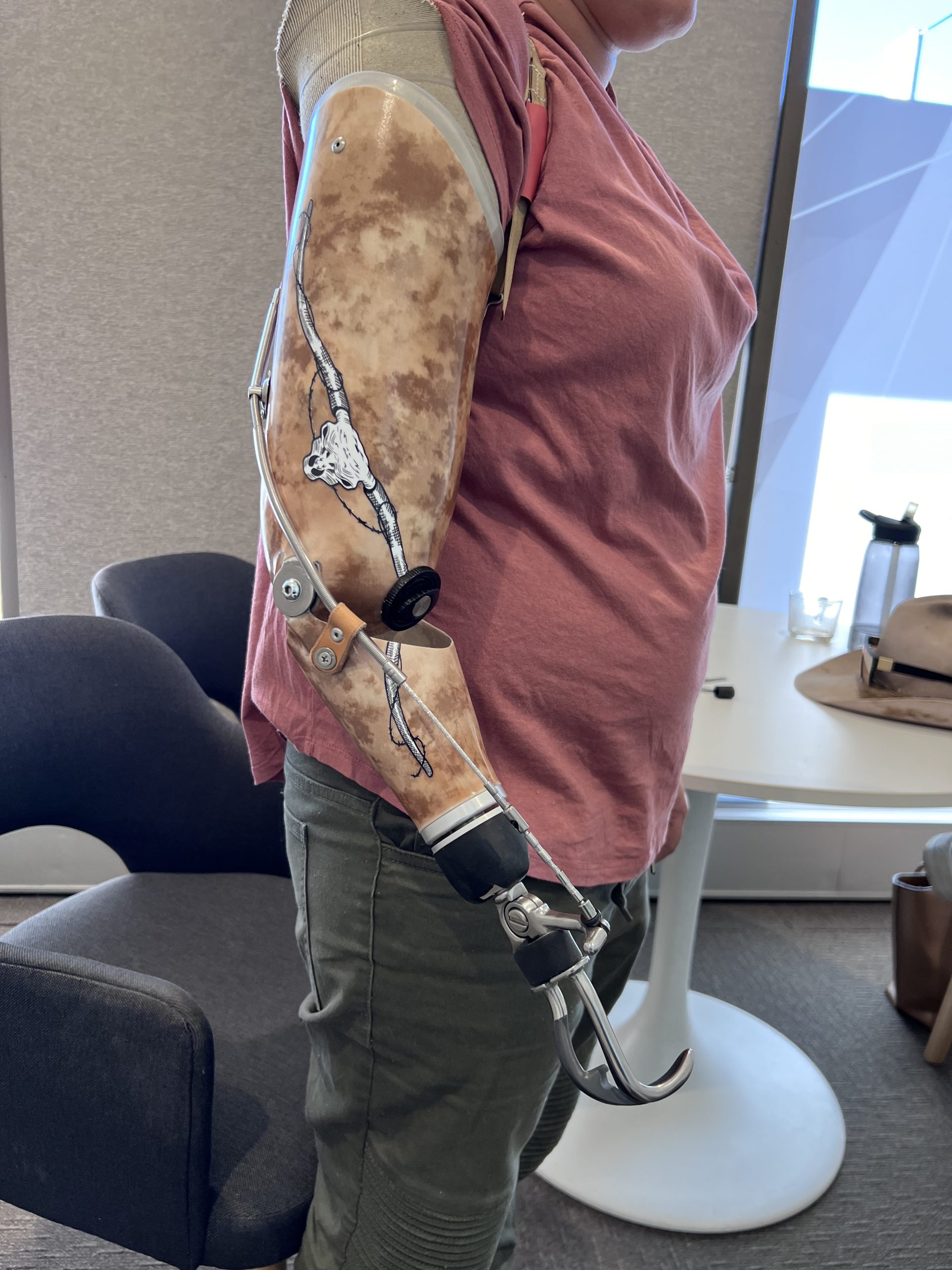
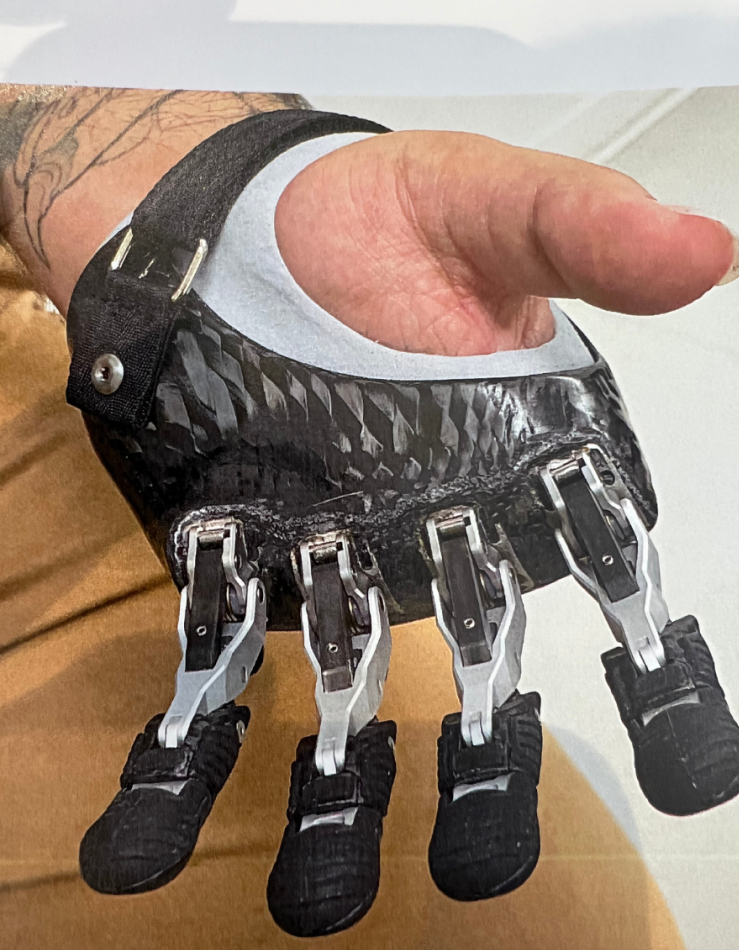

Let’s take a closer look at Types of Prosthetic Arms and locate your level of amputation/limb difference and uncover more information. Talk to your prosthetist if you have specific activities or movements that you can’t do with your prosthesis, as you may need a specialty prosthesis.
For every level of upper limb amputation or limb difference, there are options for passive, body powered or externally powered prosthetic devices.
Upper limb prosthetics management is a highly customised process. There are a few main classifications of upper limb prosthetics :
In recent years there has been development in powered upper limb prosthetic componentry, especially the use of myoelectric units and targeted muscle reinnervation (TMR). Take a look at our resources to learn about advancements in prosthetic technology.
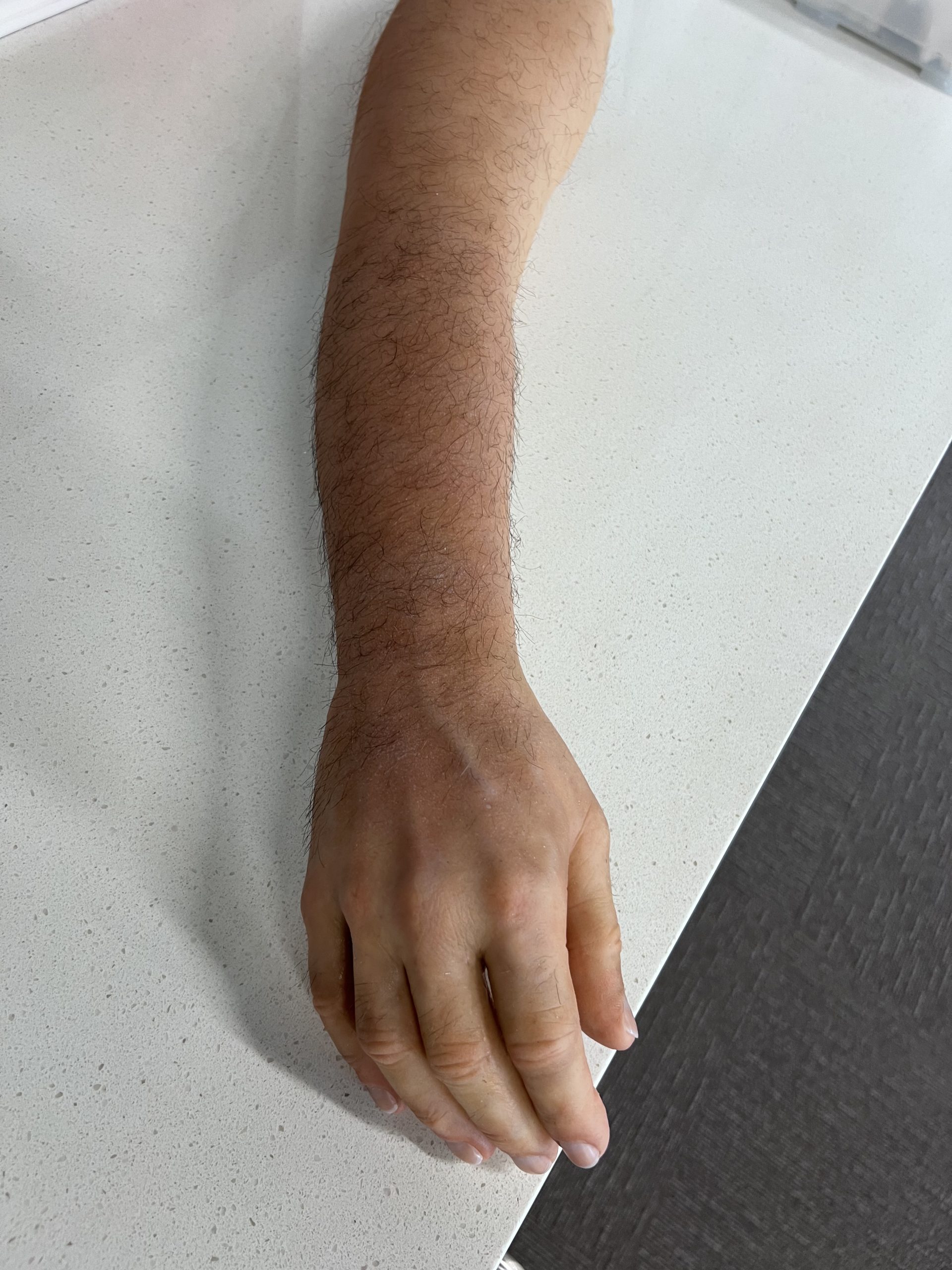
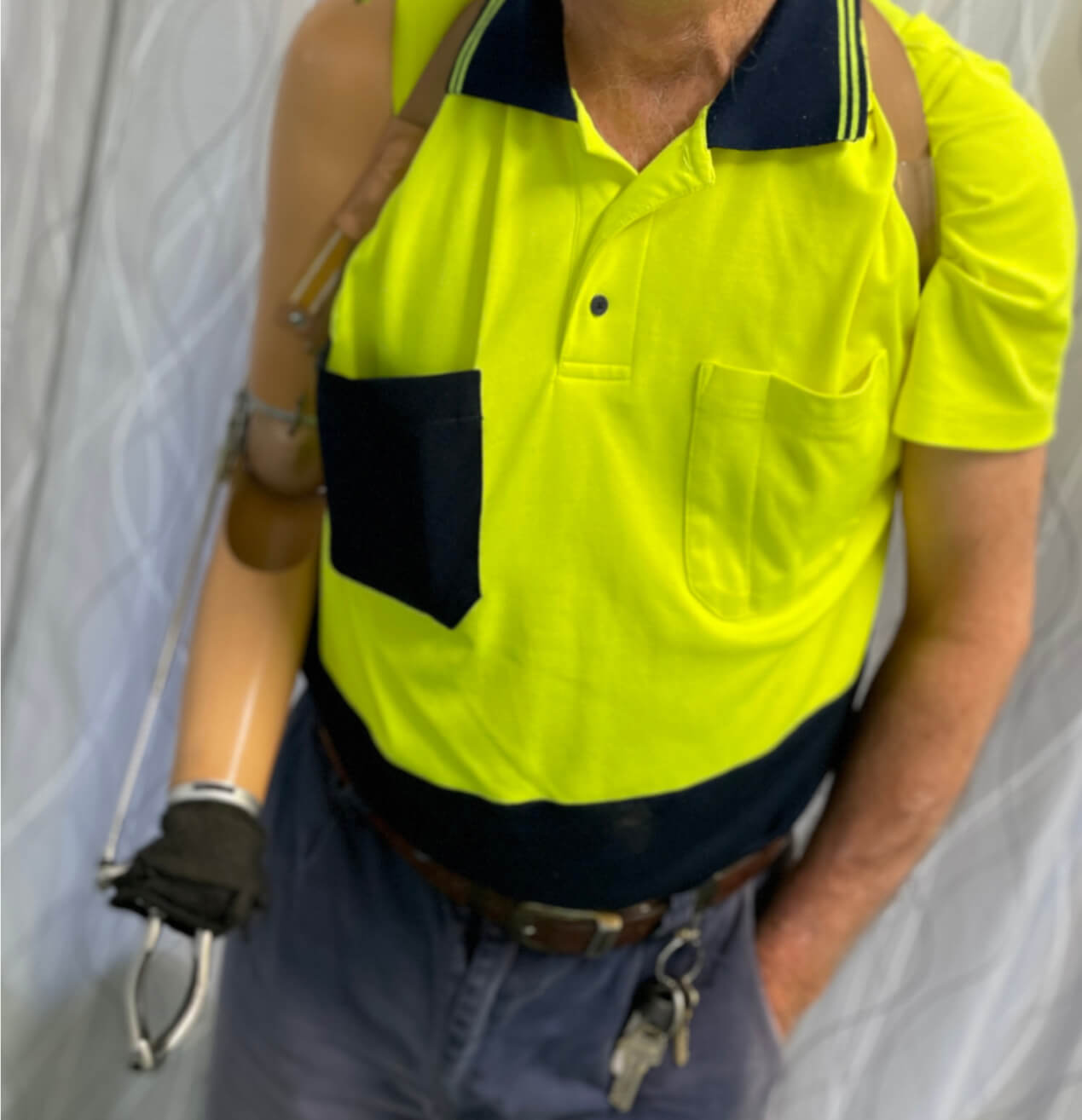
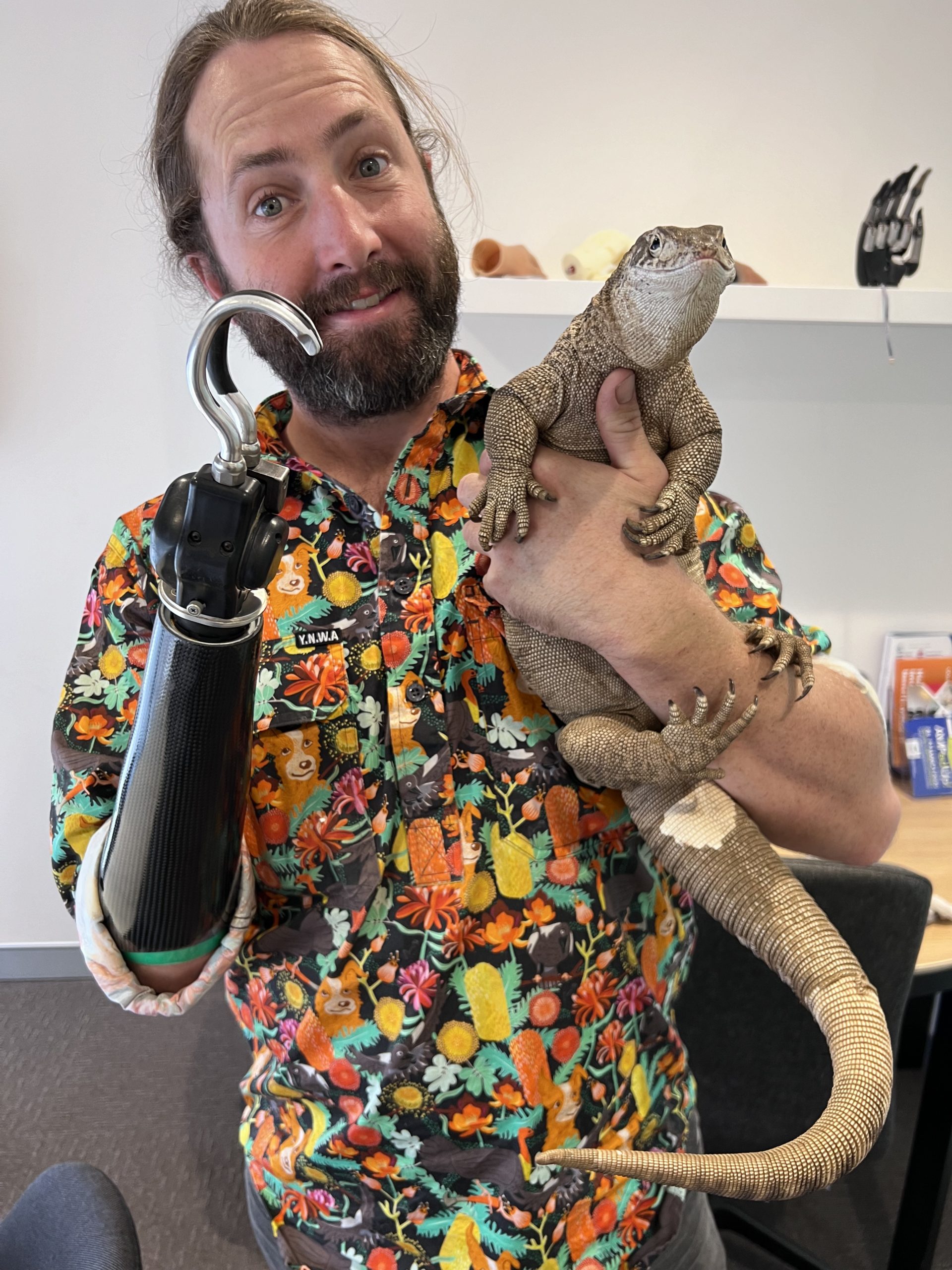

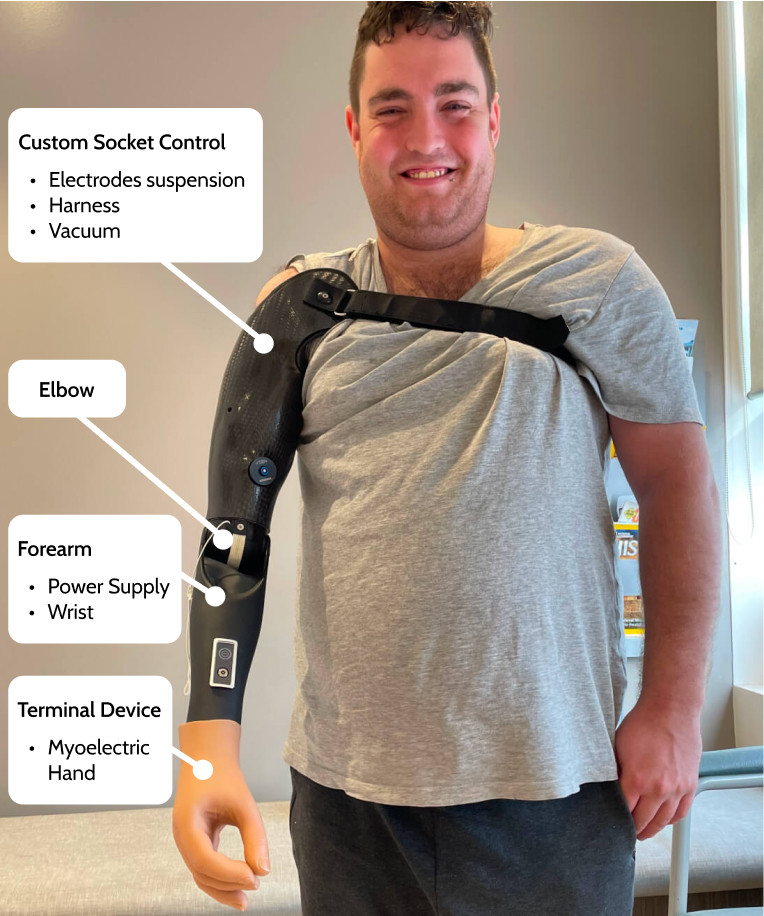
A prosthetic arm is designed to restore functionality and movement, helping you perform everyday tasks. It works through several components. The combination of these elements allows prosthetic arms to help you regain independence and perform daily activities.
The cost of a prosthetic arm varies widely depending on the type and technology involved:
Prices range greatly depending on your prescription, but if you’re not already on a funding scheme, your prosthetist and OT can help you sign up to cover costs of your prosthetic management.
Curious about what’s possible for you? Contact the ForMotion Clinic team for a free, no-commitment quote and to explore solutions tailored to your needs and budget. A reminder that funding options are available. We’re here to help!
The process of making a prosthesis will often begin with measurements and a cast of your residual limb. If you are a new amputee (undergone recent amputation) and would like to know more about how this process, check out our resources here.


